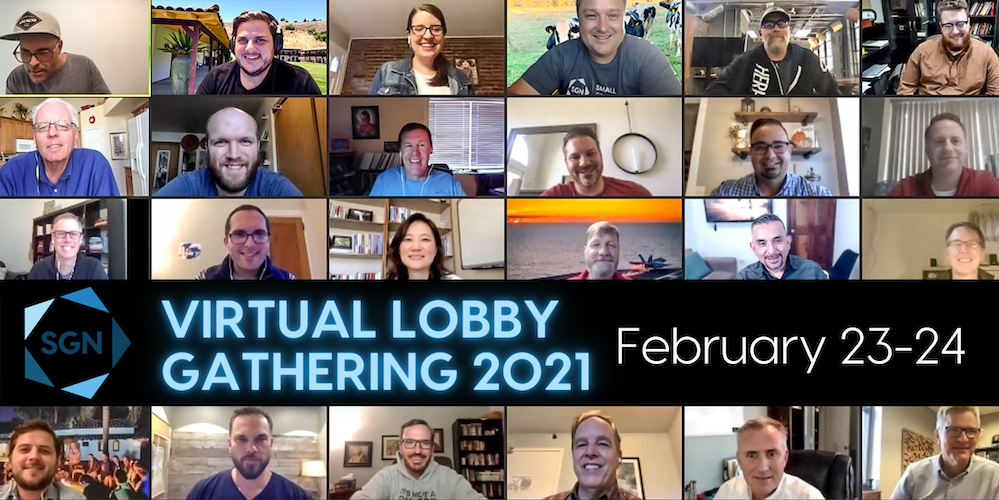
An ideal small group is a micro-church—a church in miniature. As such, it fulfills the five purposes of the church:
- Worship
- Evangelism
- Discipleship
- Service
- Fellowship
I asked recently on the Small Group Network Facebook page what as the weakest link for most small groups. The overwhelming answer was evangelism.
So, I did a little research and found three small group models of evangelism you might consider for your small groups. The following are excerpts written by experts representing each of the three models. If one of these models resonates with you, I’d invite you to research them further.
Servant Evangelism
Definition: Servant evangelism is sharing the love and message of Jesus Christ through simple acts of service and kindness. Servant evangelism is a biblical, fun, simple, and intentional way to make sharing Jesus a lifestyle!
Description: An individual or group begins doing intentional acts of kindness in their community with the aim of evangelism. Projects could include serving people by giving out free bottles of water on a hot day, passing out free granola bars to people on their way to work, or delivering gifts to local firemen or policemen. In addition to being served, each person is also given a card inviting them to church. On each card is information about the church, including service times, phone number, location, and any other information the church wishes to share.
Servant evangelism is a wonderful expression of the Great Commandment and the Great Commission. It is great for people who are first learning how to share their faith as well as for the most seasoned Christian![1]
Hospitality / Matthew Party
This is a very important part of this study—having a Matthew party. As a group, begin planning a party, like the one Matthew held, to which you invite neighbors and friends who may not yet know Christ. Your goal will be to make him known to them by letting them into your life. This means meeting people, getting to know them, allowing them to get to know you, and being ready to share your stories with them. Set a date, place, and theme for your party during this meeting, and ask someone to volunteer to bring invitations to your group meeting next week or have everyone supply their own if this works out better for your group. Party theme ideas include sports (football, Super Bowl), fiesta, luau, western, music, holiday, getting-to-know-you, game night, block party, barbecue, mystery party, decade party (‘50s, ‘60s, ‘70s), food party (banana split, cookie exchange, pizza, picnic) or season party (winter, spring, summer, fall). Be creative and have fun with this.[2]
Oikos Evangelism
When I served as a pastor, a group from our church took a trip to Seoul, Korea, to visit the largest church in the world, Yoido Full Gospel Church. They had literally thousands of small groups in their church. One of the principles that we learned during our time there was the “oikos principle.”
What is an oikos? Acts 10:2 speaks of Cornelius and all of his family (oikos). Oikos is the Greek word for household or house of people. Your oikos is that group of people with whom you relate on a regular basis. All believers should apply the oikos principle to their lives as a way of infiltrating their spheres of influence with the gospel of Jesus Christ.
One time when Paul and Silas were in prison, in the midst of an earthquake the jailer became receptive to the gospel. He invited his household to listen to Paul’s message and they were all saved. This group of people was his oikos. The oikos principle is a strategy of using our existing relationships to evangelize and to make disciples. This includes:
- Family and relatives. Your Uncle Jack and Aunt Sadie and cousin Ted are all part of your oikos, even if they live far away. If you maintain regular contact with them, they are part of your oikos.
- Those who have common interests with you. Those who play tennis with you are part of your oikos. Anyone you share a common interest with, such as an interest in computers, sewing, playing basketball, playing the guitar—these people are a part of your oikos.
- Those who live in the same geographical location as you. Your neighbors are a part of your oikos.
- Those who have a common vocation. Those with whom you work—your fellow employees—are a part of your oikos. If you are a construction worker, your oikos includes other construction workers. If you are a doctor, other professional people that you relate with would be included in your oikos.
- Others with whom you have regular contact. These people may include your dentist, family doctor, mechanic, hairdresser, sales people, school officials, and the like.
Those people in your oikos group will be much more receptive to the gospel in God’s timing because they trust you—you have built a relationship with them.
Amy, a young woman in Indiana, started talking to Jim, a fellow engineer at work, about the Lord. He would share struggles he was having with his family, opening the door for her to share Jesus with him. Here’s her story describing how her oikos relationship grew to include her small group as they worked together to reach this family.
One day, I could tell something was really troubling Jim. He told me that his father, Jim Sr., was dying and how difficult it was on the entire family. In fact, his father had been asking about God lately. He was afraid to die.
Immediately, I began to pray, “Oh Father, give me wisdom what to do!” Our small group’s desire was to reach out to our oikos—the people we relate to on a daily basis—and I realized this was a wide-open door for our group to pray. From my computer, I emailed everyone in my group, asking them to start praying that the Lord would give me wisdom how to reach this man and his family.
My small group was extremely supportive. Within one hour, I received two emails from members who were praying for me. One of my small-group members, Julie, also knew Jim personally because she used to work with us. So I called her to see if she would go with me to pray for Jim’s father. She was excited at the opportunity to share Jesus with someone who desperately needed hope.
At work the next day, I asked Jim if we could pray with his father. He was very open to the idea. He called his parents, and they too were thrilled to hear we were coming. Of course, I jumped back on my computer and emailed my small group to start praying again!
That night, Julie and I drove to Jim Sr.’s house. When we arrived, Jim Sr., his wife, Sandy, and their granddaughter, Nicole, were there. They were so hospitable as we talked for a while, getting to know them.
When we asked them what they would like us to pray for, Jim Sr. said he was afraid to die—he was afraid of the unknown. Julie began to talk about the assurance we can have through Jesus Christ. Then I shared the concepts of salvation and eternal life with him. After discussing some more, we had the privilege of leading Jim Sr. to receive Jesus as his personal Savior. What a blessing this was for us!
At work the next day, Jim thanked me for praying with his parents. I told him it was our pleasure, meanwhile thinking to myself, You’re next! I mentioned that our group offered to bring over dinner for his family or help them with other daily chores. He was amazed that people who didn’t even know him would offer to help his family.
My group made dinner, and I took it to their house. The next day at work, Jim Jr. couldn’t stop thanking me for the dinner. I told him it was my small group that made the dinner and we all have been praying for them. Later that day, he asked me for directions so he could bring his family to our group!
Everyone in my small group is praying for this family. Though I am the one with the closest working relationship with this family, we all play a role—especially one of prayer. This is what small-group life is all about! Working together to reach the lost!
Sometimes Christians discover they have only other believers in their oikos. When this is the case, steps need to be taken to develop new circles of relationships. Some believers join soccer teams, neighborhood organizations and other community groups to increase their oikos.[3]
On a simplified and less organized level, group members can use the power of a shared meal or meeting for coffee to embrace the stranger. The entire small group need not be involved—possibly only a couple or a member from the group.[4]
[1] Nelson Searcy and Jennifer Dykes Henson, Ignite: How to Spark Immediate Growth in Your Church (Grand Rapids, MI: Baker Books, 2009), 185–186.
[2] Brett Eastman et al., Influence: Living a Contagious Life (Grand Rapids, MI: Zondervan, 2011).
[3] Larry Kreider, What Every Small Group Leader Should Know (Grand Rapids, MI: Chosen, 2010).
[4] Mark Priddy and Al Roxburgh, “Series Preface,” in Missional Small Groups: Becoming a Community That Makes a Difference in the World, Allelon Missional Series (Grand Rapids, MI: Baker Books, 2010), 153.





